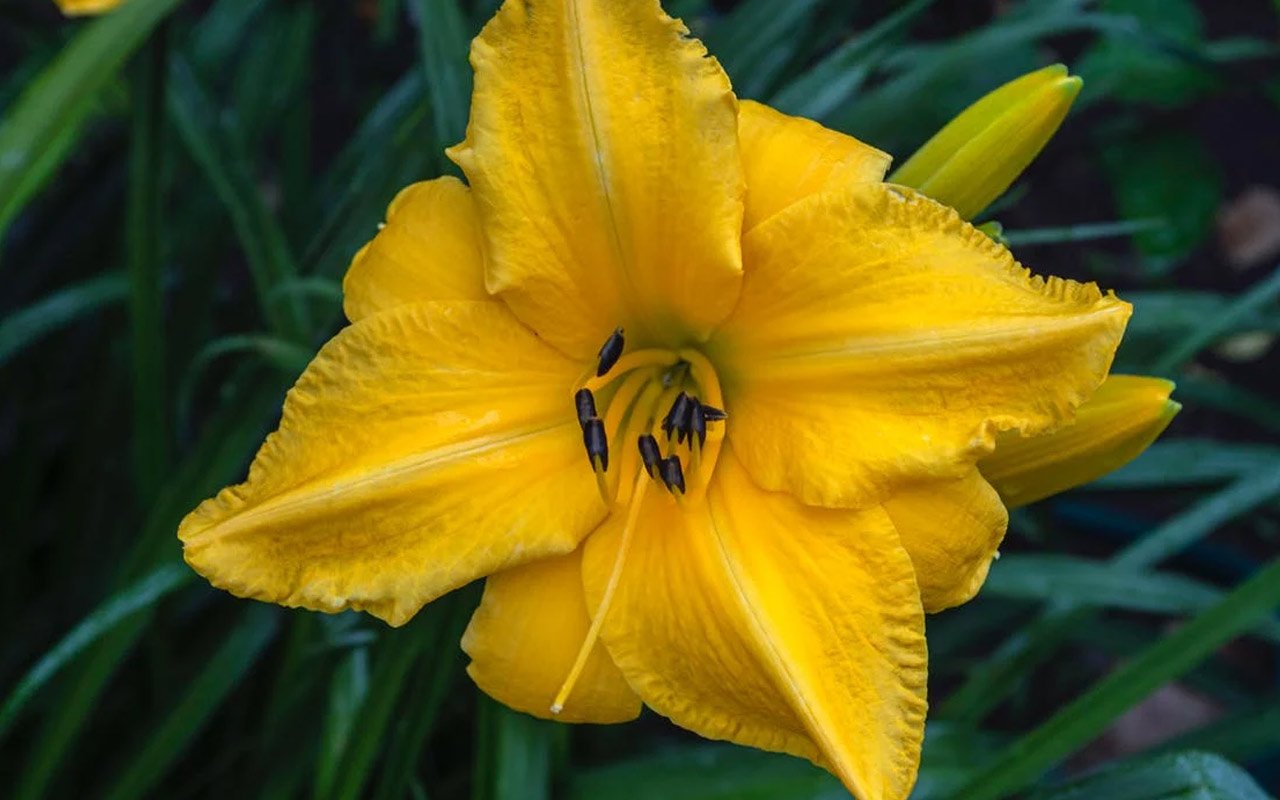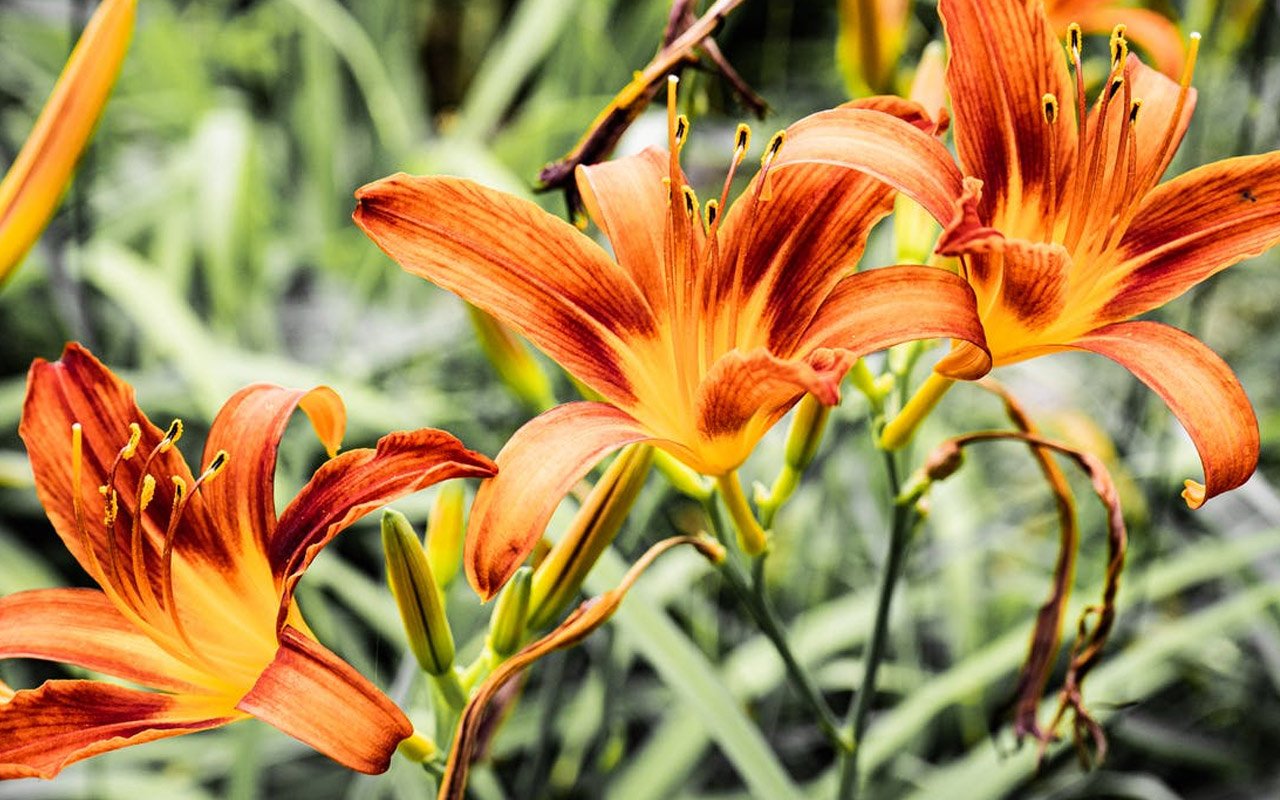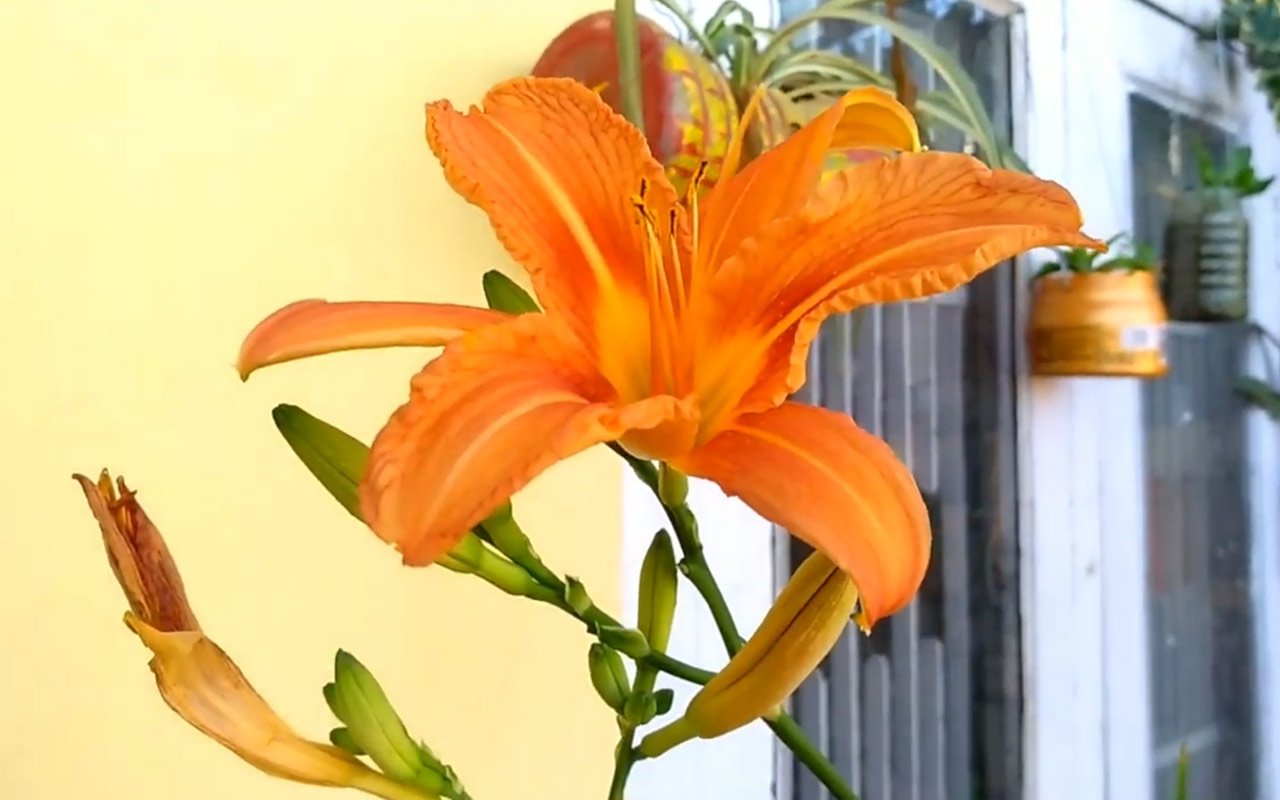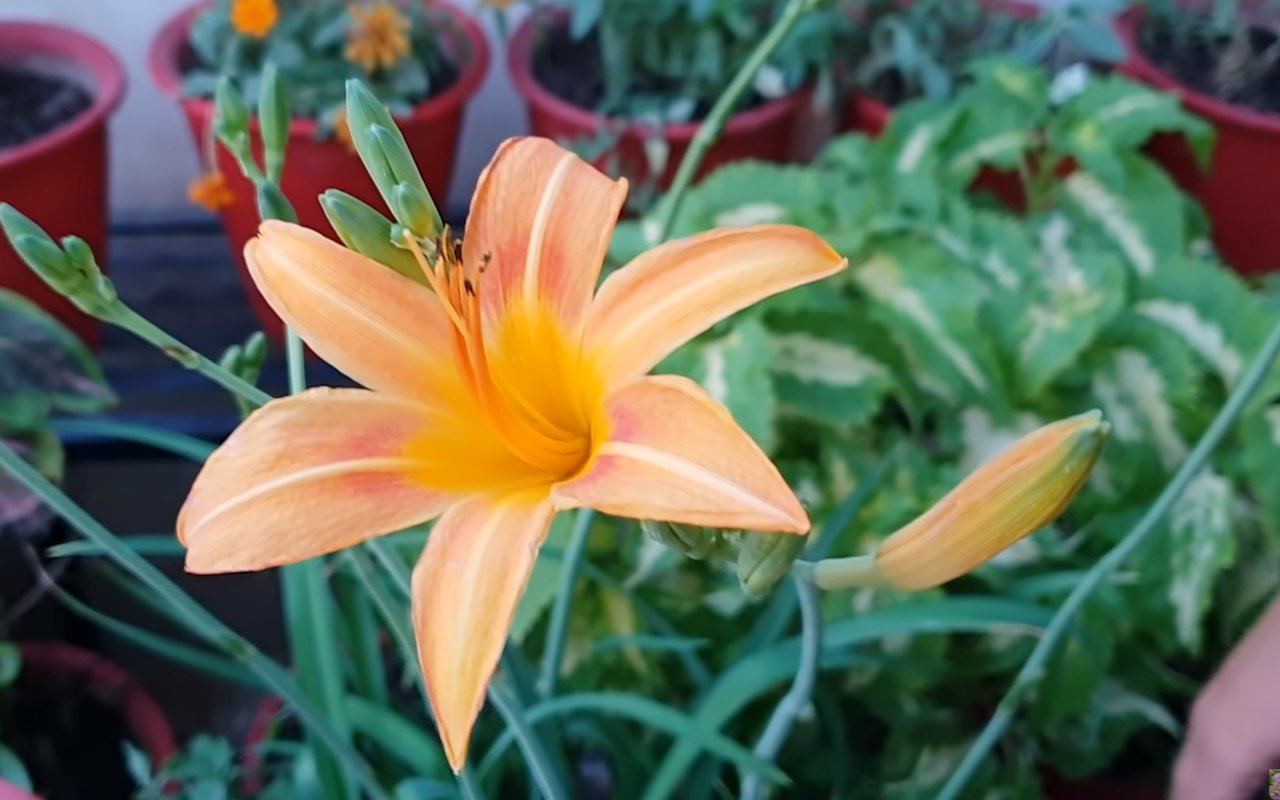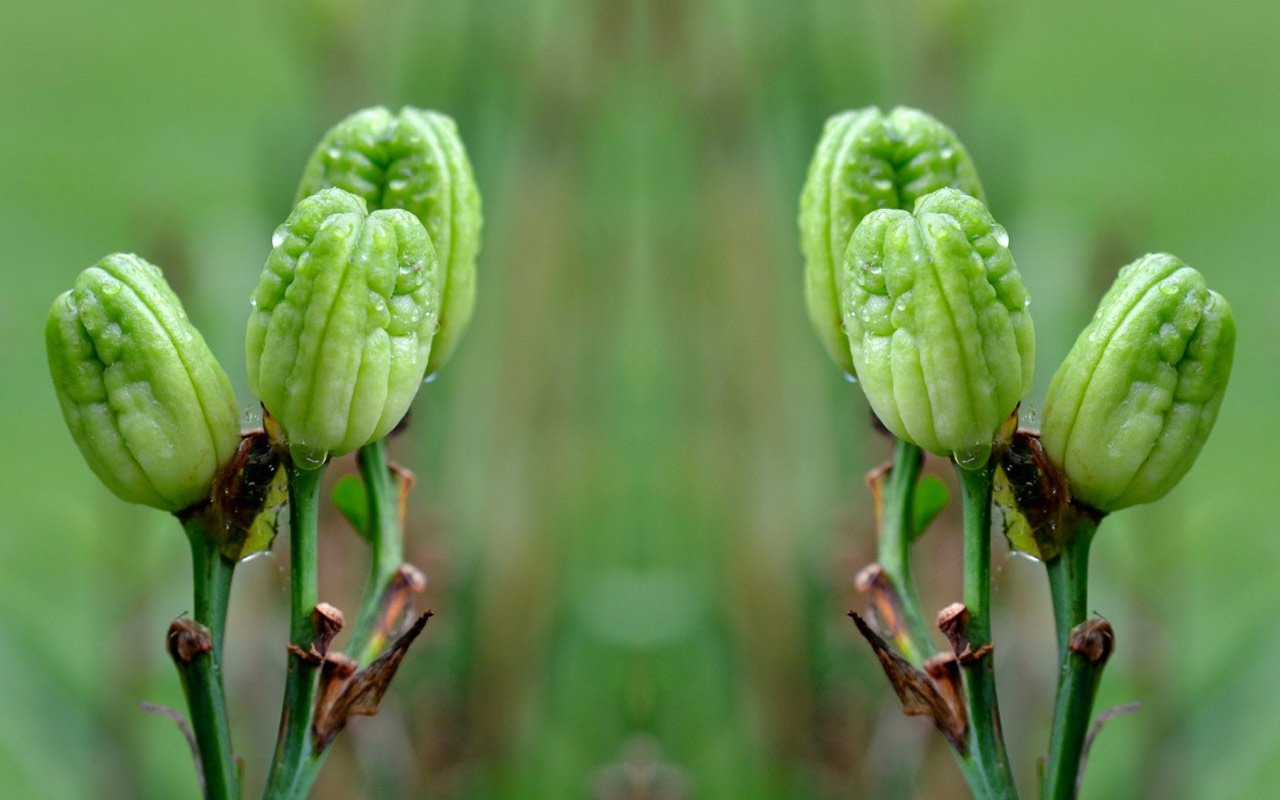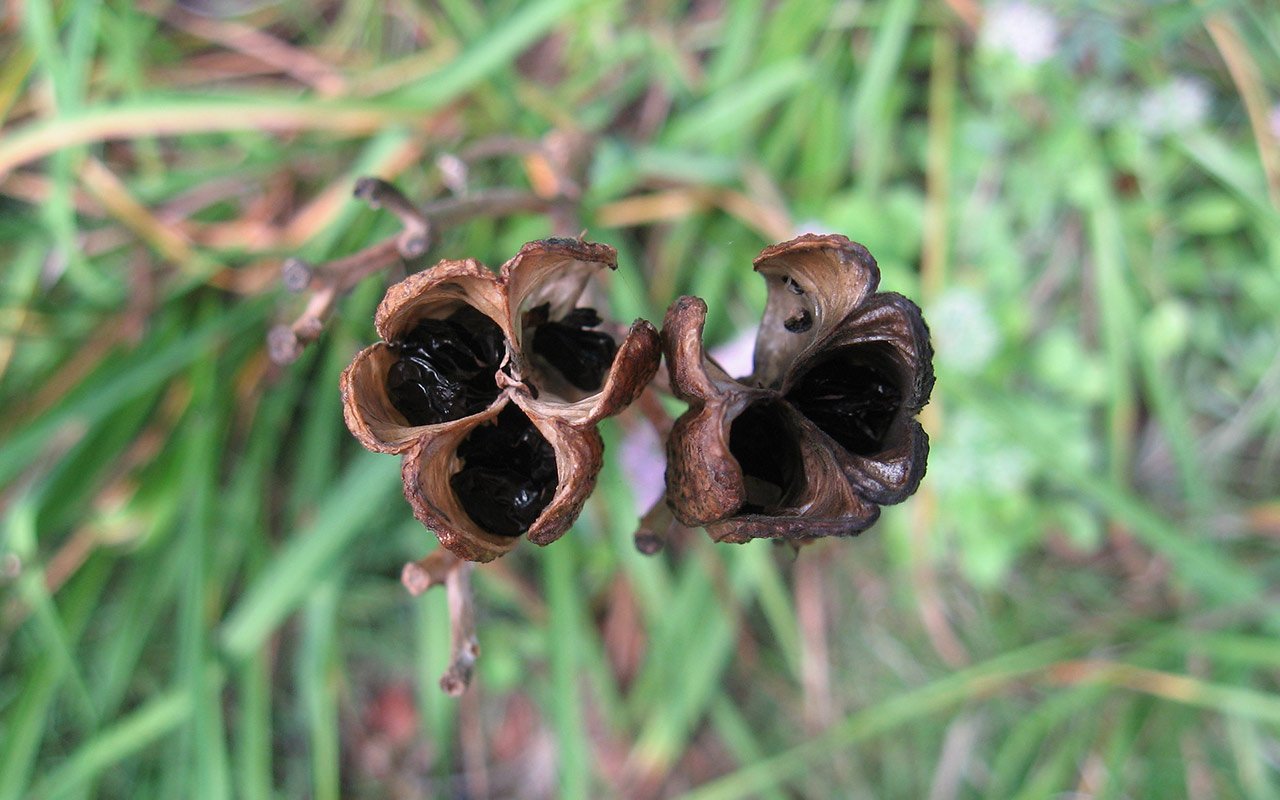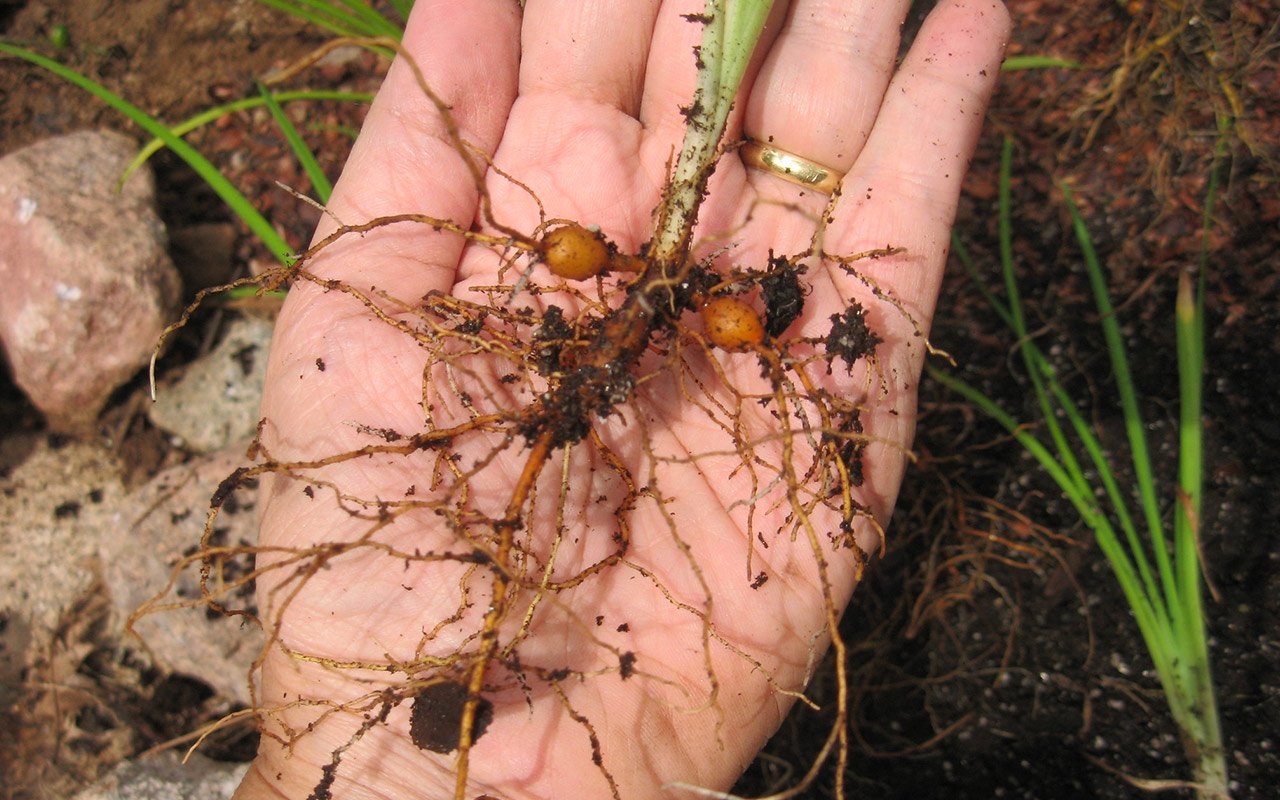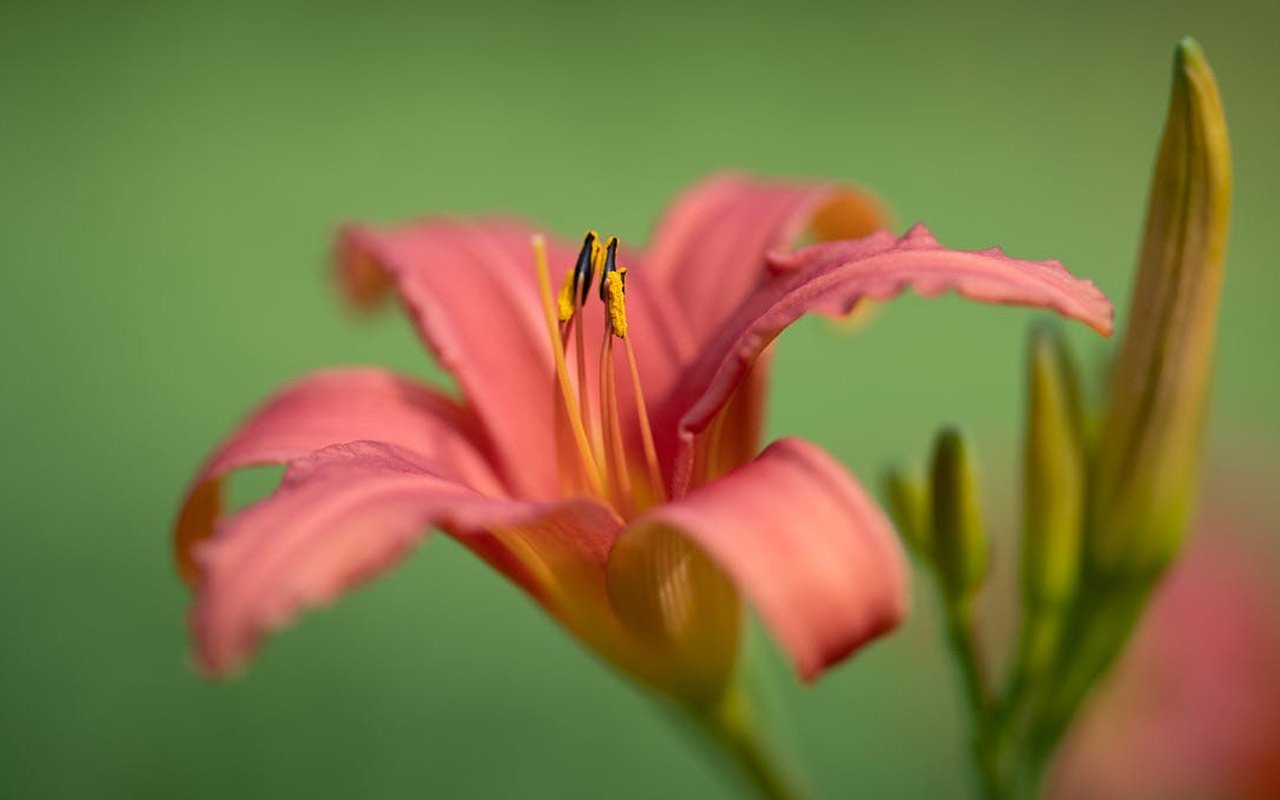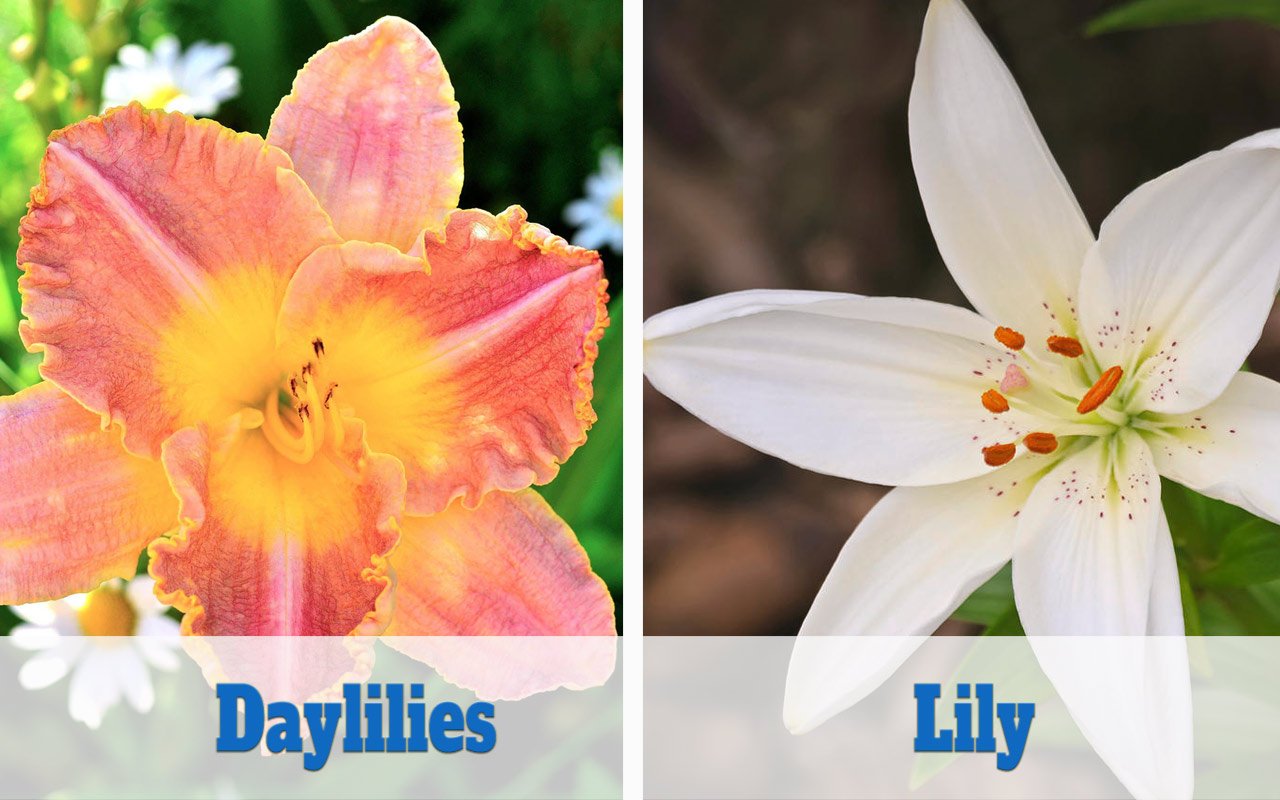This article covers everything you need to know about daylily care, from watering and planting tips to pest management. There will also be helpful tips and photos from daylily growers.
Daylily, also known as daylily, is a species of flowering plant in the genus Hemerocallis. It is a member of the subfamily Asphodelaceae Hemerocallidoideae. It is not a lily, although its common name sounds similar.
Dayflower breeders have been cultivating daylily varieties for their beautiful flowers for many years. Hemerocallis associations in the US and internationally have registered thousands of varieties of this plant.
Hemerocallis is derived from the Greek word “Hemera”, meaning “day” or Kalos meaning “beautiful”. Daylilies are named daylilies because they flower and then wilt in a single day. Each flower lasts only one day.
However, this does not mean that you cannot have more flowers. You can “manipulate” your plant to prolong its flowering season with a little horticultural knowledge. Daylilies are large and colorful and can be grown year after year, even in arid conditions.
This guide will show you how to plant, care for, and maintain daylilies in your garden. It also includes tips for cleaning up after blooms and how to plant seeds and cut flowers to make them flower more.
Table of Contents
Daylilies
| Common Names | Daylily, day lily |
| Botanical Name | Hemerocallis species |
| Family | Liliaceae |
| Plant Type | Herbaceous perennial |
| Mature Size | 8 in. 8 in. |
| Sun Exposure | Full sun (tolerates light shade/part shade) |
| Soil Type | Deep fertile, medium-loamy soil (tolerates light sand or heavy clay). |
| Soil pH | Acidic |
| Flower Time | From spring to the end of summer |
| Flower Color | Red, orange, yellow, purple, pink |
| Hardiness Zones | 3-10, USA |
| Native Area | Asia and Central Europe |
| Toxicity | Toxic for cats |
A daylily or day lily is a flowering plant in the genus Hemerocallis, a member of the family Asphodelaceae, subfamily Hemerocallidoideae. Despite the common name, it is not in fact a lily. Gardening enthusiasts and horticulturists have long bred daylily species for their attractive flowers. Thousands of cultivars have been registered by American and international Hemerocallis societies. (Source)
The daylily is a low-maintenance, virtually maintenance-free perennial. Although Daylilies are sun lovers and need at least six hours of direct sunlight each day, they can also survive drought, uneven sunlight, and nutrient-poor soil.
However, if there is a lack of light, Daylily will not flower and the foliage will not be as lush. You can combine early, mid-season, late-blooming, and repeat varieties for a continuous blooming daylily from late spring until the first frost.
Daylilies, despite their name, are not lilies. They grow from fleshy roots. True lilies, which grow from onion-like bulbs, are of the genus Lilium. They are similar to Asian and Oriental lilies. Daylilies have leaves that grow from a crown.
The flowers are formed on leafless stems called “scapes”, which rise above the foliage. A scape can have 12-15 buds, and mature plants may have between 4-6 scapes. This gives the plant a long bloom time. The scape’s length is listed beside a daylily variety. Some can even reach 6 feet high!
Daylilies By Color
Daylily colors can range from almost white to deeply saturated satin red-purple. The dominant colors of the species are yellow and gold and were originally hybrids. There are many combinations and colors now. It seems that there is no blue pigmentation.
When seen from afar, yellow, red, and gold are well-represented. The combination of pinks and purples works well together. Near Whites work well with perennials. Although yellows, reds, and golds are also great.
We offer a variety of colors here:
- Citrus – Yellow daylily
- Creams
- Nearly black
- Orange
- Pastels
- Pinks
- Purples
- Red
If you are wondering why there is no white in the list above, the answer is: Actually, currently there is no white daylily, however, there are white daylily varieties with a color close to white but no daylily with perfect white color.
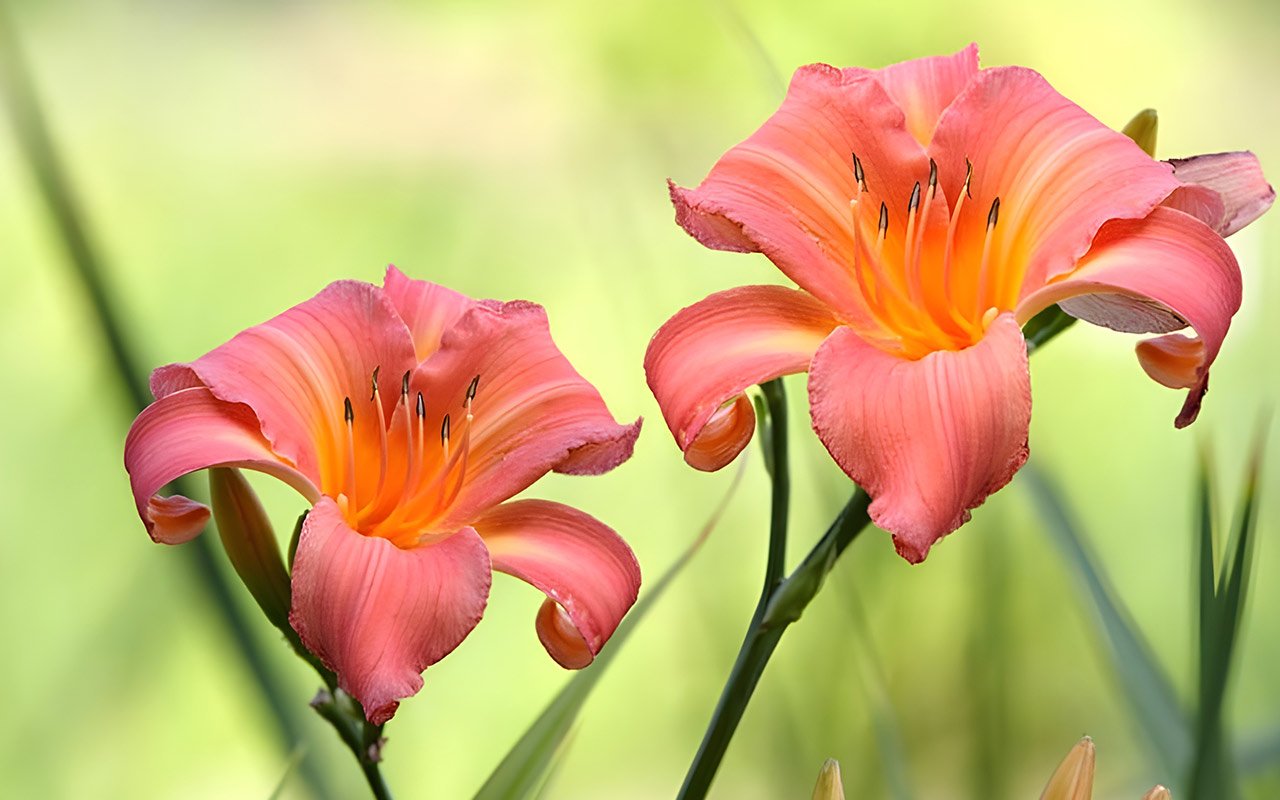
Different types of Daylilies
- Stella D’Oro is a reblooming daylily. They are herbaceous root plants. The flowers are a deep golden yellow. They put on quite the show from early summer to midsummer, and rebloom later in each season.
- The Purple D’Oro is another reblooming option. It blooms in summer with lavender-purple flowers and reblooms in the fall.
- Crimson Pirate is available in red with a golden yellow accent and a milder, sunny yellow throat. The petals are short and elongated.
- The Autumn Red is hardy in zones 2 to 9. It is characterized by large, bright red flowers with yellow eyes and striped petals.
- Citron Lilly (H. Citrina ) grows three feet high. The sweetly lemon-scented flowers bloom at night.
- Lemon Lily (H. Lilioasphodelus and H. Flava) stems can reach 3 feet high, while very fragrant lemon-yellow flowers bloom from May to June.
Each Daylily flower only lasts for one day
Daylilies (Hemerocallis), one of the hardiest and most versatile perennials, are a great addition to any summer garden. Even though individual flowers may fade, plants can continue to produce new blooms for as long as four to five more weeks.
Daylilies typically bloom from late June to July. There are many varieties of re-blooming daylilies that bloom in the late summer. This dramatically extends the growing season.
There are literally thousands of daylily types available today in every size, shape, and color. Many are also proliferous. One stem can produce many blooms. A clump of flowers can produce many blooms in a single summer month.
However, being easy to grow does not mean that it is maintenance-free. Daylilies that are left unattended can quickly become a large number of soggy, spent blooms.
These dead flowers can not only be an eyesore but also have an impact on the blooming process.
How to extend the blooming season by deadheading
Regular deadheading is a common practice that encourages plants to produce more flowers. Did you know that deadheading can extend the blooming season of your plants?
Every morning, I take out the daylily’s spent flowers and snap them off at their base to keep them blooming for longer. This is why I do it for two reasons:
- It makes the plant appear better.
- It will give energy to the plant to produce more stalks and more flowers if I take out the dead flowers, especially the ovary/seedpods.
Why remove seeds to extend Daylily blooming season?

Seed pods are great if you want to grow more daylilies. A few seeds can be left on the plant. If you want to extend Daylily blooming season, however, it is important to get rid of them.
You will wonder why removing seed pods helps extend the blooming season of Daylily flowers? Because the plant spends its energy-producing seeds, it will have very little left to produce flowers. Removing seed pods will conserve energy and allow more flowers to be produced.
When removing the spent daylily, be sure to remove all the flowers at the base and the seed pod. Once the stalk has finished flowering, you can cut it down to the ground. It will stop producing blooms next year.
Daylily Flowers Care
Daylilies don’t require much care and can survive without neglect. But if you want them to thrive, here are some tips. Once a week, water daylilies that have been planted.
Daylily clumps grow up to eight inches tall. They can grow up to two to four feet in width. For a dramatic display, place the bare roots at least three feet apart. Plant roots in the spring or early fall, one month before hard frost.
Measure the diameter of your root and then loosen it. Dig the hole to the depth of the root. Place the crown in the center of the mound, and then move the bulbous roots outwards.
To eliminate air pockets, evenly add soil and tamp. Water generously when the hole is about two-thirds full. Water the remainder of the hole until the crown is at least an inch below the soil surface.
Light
Daylilies are fond of full sunlight so ensure your plant gets at least six hours of sunlight each day. Even though it will help keep your plants healthy in hot climates, you can provide afternoon shade to your plants.
Soil
Daylilies can thrive in any soil but they prefer to be planted in fertile, rich soil. Make sure that the soil is not too dry. Adding compost can help it retain moisture.
Water
Water your garden regularly during the first growing season. For the next season, water only if it is extremely dry. Over winter, a thin layer of straw mulch should be applied to the crown of your plant.
Humidity and Temperature
This plant is tough and can withstand most temperatures and all levels of humidity. Although it prefers about 1 inch of moisture per week for best results, it can also withstand dry periods without major damage.
Fertilizer
Reblooming daylilies can be fertilized with an extended-release fertilizer such as Flower Power and other varieties. This will encourage plants to flower again in the spring and possibly fall.
Common Pests and Plant Diseases
Daylilies are usually pest-free. Even rabbits avoid them. However, deer tend to enjoy the whole plant.
You can prevent slugs or snails from getting to your plant by picking up any leaf litter that is around the crown. In the spring, check for aphids on the buds. Also, in hotter conditions, look for spider mites and thrips. Cleanse with insecticidal soap if any of these are present.
Daylilies: Common Problems
Daylilies can be tough and relatively easy to care for, but they are also very resilient.
Your plant may be suffering from yellowing leaves due to insufficient water. You will need to add water to your plants if they are receiving less than one inch of water per week.
If your leaves turn brown, this is likely leaf scorch. This is a common condition in daylilies that is not fatal and can be treated by tweaking the plant’s growth conditions. If the blooming season is over, you can remove any dead leaves or cut the plant to the ground to encourage new growth.
Daylily seed pods to beware
The seed pod is dangerous! Daylily flowers are found near the stalk’s tip during the active growing season. Each flower eventually withers and falls, but it still leaves an ovary that will develop into a seedpod. Immature seed pods look a lot like emerging blossoms.
They are located at the base of the flower and are oval-shaped and pale green. Below (center), you can see where I cut off a flower and left the ovary visible. This will become a daylily seed pod.
Left alone, seed pods slowly develop alongside emerging blooms. They develop three distinct lobes as they mature, eventually growing to about 1 to 2 inches.
The pods mature in 50 days. They shrink in size as they harden. (If you shake them, the seeds will rattle). Finally, the pods break open and release a lot of black seeds. This is why daylilies can grow in strange places and far away from the original place they were planted.
Daylilies love extra water and food
Don’t forget about your daylilies. Spring and fall feedings have a positive effect on flowering, while also strengthening plants for winter. Even though daylilies are generally drought-tolerant, they will bloom better if you give them more water.
You only have to look at the flower’s moisture content to see how it looks. Daylilies can survive without water because they are drought-tolerant and hardy. They do require about one inch of water each week, which is enough for normal rainfall. You can water your plants if you live in dry conditions or a dry climate. They will then reward you with more flowers.
To keep the plant moist and minimize weeding, add mulch to its borders. Daylilies don’t require fertilization, as long as the soil remains reasonably fertile. You can stimulate stronger bloom performance by adding a little general-purpose fertilizer (10-10-10) once a year as the new daylily top grows.
Sprinkle a few drops of fertilizer at the base of each daylily clump. Water if it is dry. You can fertilize daylilies again after they have finished blooming. This will help them multiply more quickly in the future. You don’t need to deadhead, but you can remove the spent blooms in order to encourage more flower production.
You can simply snip the blossoms when they start to wilt. Daylilies are not self-sowing. You will need to divide them to make new plants. After all the daylily flowers have bloomed, you can either cut the whole scape to the ground immediately or wait until the fall. It will turn brown if you don’t cut it back.
In the spring, you should remove any dead leaves from the previous year’s growth before the new growth begins in the spring. In the spring, add aged manure and compost to the soil. Dividing Daylilies and Transplanting Daylilies. Daylilies are aggressive spreaders and may need to be divided at some point.
This is usually every 3 to 5 years. Dividing daylilies will not only control their spread but also give plants a chance to bloom more often and better. Here are the steps to divide daylilies. Although you can do it at any time that the soil is suitable, it is best to do it after the daylily has stopped blooming.
It takes at least six weeks for the plants to be reestablished before winter. The entire root clump should be removed. As much soil as possible must be removed from the roots. To get rid of any excess soil, soak the roots in water. Find the crown of your plant.
Start at the outer edge and break it up into smaller clumps, usually 3-4 per plant. Each clump should contain healthy roots and at most a few leaves. Reduce the length of the leaves to about one-third of their original length (usually 5 to 6 inches). Water thoroughly and replant.
Planting Daylilies
Gardeners have enjoyed growing daylilies (Hemerocallis), for hundreds of years. We now have around 35,000 hybrids to choose from, in addition to the original 15 species that were found in Central Europe and Orient. More are added every year.
While traditional plants that die in winter are less common, there are many new, semi-, or evergreen varieties. Although their flowers only last one day, mature clumps can produce 200 to 400 blooms in a month. Daylilies can be planted as individual plants or as a clump to provide a cover for a slope.
These beautiful flowers will add beauty and joy to any garden. Daylilies are easy to care for and can even survive neglect. Daylilies can be planted in spring, fall, or both. However, as long as the hole is large enough you can still plant them.
Daylily care begins with planting. Add plenty of organic matter to sandy soils or clay soils. Daylilies prefer slightly acidic soils, but they can be grown in any kind of soil. You should choose a location where daylilies can get at least six hours of sunlight each day.
Morning sunlight is the best, especially in warmer regions where the afternoon sun can scorch leaves. These plants are hardy and will thrive with less water, but they won’t bloom as often. Reduce the length of the leaves to 6 inches (15cm). Dig the hole twice as deep and wide as the root spread.
The crown, the area where the roots meet with the stem, should be approximately 1 inch (22.5 cm). Below the ground. Add your amended soil to the hole and water the well. Keep daylilies well-watered until they are established after being planted.
Daylilies grow vigorously and can be divided every three to four years. Daylilies are great for trading with friends and neighbors because of their many varieties. Daylilies need to be planted in full sunlight or partial shade and receive at least 4-6 hours of sunshine per day.
Even though they prefer full sun, sometimes bright daylily flowers can be found under tall trees. Daylily flowers will prefer to be in the open, so they will move away from shade if there is any. Daylilies should be planted in spring when the soil is ready to be worked. Plant them in the fall at least six weeks before the first frost.
Daylilies Should be planted in full sunlight or partial shade, that receives at least 4-6 hours of direct sun each day . Even though they prefer full sun, sometimes colorful daylily flowers can be found under tall trees. Daylily flowers will turn away from shade if there is any.
How do you grow daylilies?
While it would be easy to just throw them in the ground and forget about daylilies, there are some things you can do to help these hardy growers. Even though you only need to fertilize once a year, gardeners who are experts in daylily care may recommend using a basic 10-10-10 during spring and bloom.
These plants are drought-tolerant once they have been established. You can water as necessary. Daylilies are best when the seed pods have been removed once they are up and growing. The next year’s bloom will be impacted if the seed pods are left on the plant.
Daylily care begins in spring with removing dead leaves from the ground and weeding. Although mulch can help keep weeds under control, it is not necessary for the plant.
Daylily leaves become so thick once they are fully grown that they shade out the surrounding weeds. It is uncommon among daylily varieties. However, thrips or aphids are rare diseases.
The problem usually starts with other garden plants. The problem can usually be solved by applying an all-purpose insecticide (whether chemical, organic or strong sprays of water). You now know how to grow daylilies, and how easy it is to care for them.
Note: All recommendations regarding the use of chemical substances are intended to be used for informational purposes only. Organic approaches are safer and better for the environment than chemical control.
Interesting facts about Daylilies
- Award-winning Hemerocallis Red Volunteer is one of the most popular Daylilies. This midseason Daylily produces large quantities of extra-large, 7-inch flowers. The rich red velvety flowers are 18 cm in diameter and have a contrasting golden-yellow throat. This deciduous perennial that forms clumps bloom in the middle to late summer and can grow up to 30 inches.
- It is not necessary to remove the old flowers from your daylily (deadheading). It does provide some benefits for maintaining a vibrant and healthy garden. Many gardeners find it essential to remove old daylily flowers. They can cause an unkempt appearance to the flower beds.
- Spring is the best time to transplant daylilies in all climates. The shoots are just starting to emerge. Cooler temperatures and gentle spring rains are good for transplant shock recovery.
- Echinacea and Perovskia, Achillea Coreopsis, Phlox, and Salvia are great daylily companions. They will bring life to your garden with the fluttering of butterflies and hummingbirds.
- A daylily flower only lasts for 1 day. Snap off any spent flowers to keep them looking fresh. To keep your plants neat and prevent them from putting their energy into seed production, trim the scapes once they have finished blooming.
- Daylilies love water in the growing season and need about an inch of water each week. Regular rainfall in many places will provide much of this amount. Your daylilies will be greatly benefited from supplemental watering in areas with less regular rainfall.
- Daffodils (Narcissus), plantain lilies (Hosta spp ), and Daylilies (Hemerocallis) can tolerate juglone and thrive in shade. Other good options include little bluestem (Schizachyrium solarium) or other native grasses, which grow naturally under oaks.
- There are over 35,000 daylily cultivars. Daylilies can be grown in USDA plant hardiness zones 1 to 11, depending on their species and cultivar. This makes them one of the most adaptable plants for landscapes.
- Because of their hardiness, daylilies can survive for several years. It is best to divide them every three to six years in order to give enough space for the roots to grow.
- Many daylily varieties are activated by the sun. They open in the morning and close at night. Some flowers may remain open for up to 16 hours.
- There are over 80,000 varieties of daylilies. They come in a variety of colors, sizes, and shapes. These plants are easy to cross, which has resulted in a large number of new varieties.
- Wineberry candy is one of the most popular Daylilies. The rich purple throat accents the orchid-pink petals.
- There are more than 70 types of Daylilies. It can be difficult to decide which one will look best in your landscape. Daylilies come in a variety of forms, including deciduous, semi-evergreen, and evergreen. These flowers are usually yellow, orange, or russet-colored.
- Daylily flowers are symbolic of love, happiness, success, wealth, and forgetting about the past.
- The day lily is a flower that symbolizes the sacrifice a mother makes for her child. It could also symbolize the maternal devotion a child shows to his mother. There are many other meanings for the day lily. It can also be used to indicate good fortune, such as when the day lily is held in a happy manner.
- Lady Fingers and Hyperion are both the most fragrant Daylily. They are tall and beautiful as you pass them.
- Daylilies come in a range of heights, from 8 inches up to 5 feet. Flower size can be as small as 2 inches or as large as 8 inches
- Daylilies in general aren’t a very fragrant perennial. Most of the cultivars available on the market lack any fragrance.
- Daylilies that are grown in gardens will not become invasive. You can ask your friend to share daylilies from his garden if they are not orange and you feel confident planting them.
Daylily vs Lily
The daylily is often mistaken for the lily, as they have flowers that are almost identical in appearance. There are some key differences. The first is that daylily foliage grows from the ground and is long. They resemble ornamental grasses in that they are long and stout. They have no foliage on their flower stems. On the other hand, the lily holds its leaves and flowers on one stalk.
Fact:
The lily is one of the Tet flowers that many Vietnamese people display during the Vietnamese Lunar New Year
The lily’s leaves are arranged in spikes from the stalk, much like a pineapple. Rhizomes are also present in daylily roots. A bulb is the root system of a lily. Daylily flowers are always pointed upwards, while lilies may have petals that curl back and point downwards.
Frequently Asked Questions
When should you plant daylilies?
Daylilies can easily be planted at anytime the ground is available -- spring, summer, or fall. To prevent frost heaving, Daylilies that have been planted in fall should be mulched. Daylilies should be planted as soon as they are received.
Daylilies can be planted anytime between spring-fall. It is crucial to take into account the climate of your region in order to decide the best time to plant daylilies. This will help you make an informed decision about when to plant your plants for the best effect and protection. Because it is warm, but not too hot, spring tends to be a safe choice for most people. It also gives plants enough time to settle down and grow before winter.
What month do daylilies bloom?
June is daylily's peak bloom time. You'll find blossoms of a variety of colors on stems that range from one to five feet high. Each flower lasts only a day. However, plants usually open multiple blooms over four to six weeks.
Do daylilies like sun or shade?
Daylilies need to be planted in full sunlight or partial shade and receive at least 4-6 hours of sunshine per day. Even though they prefer full sun, sometimes bright daylily flowers can be found under tall trees. Daylily flowers will look toward the open skies wherever there is shade.
How do you get daylilies to bloom all summer?
Daylilies can be strong garden performers. You can get more blooms if you deadhead them (cut the old stalks at their base).
How many years do daylilies last?
Daylilies can grow for many years with no attention. However, they will produce more flowers when divided every 5 years.
Individual flowers can change daily but plants can keep producing new ones for up four to five-week. Daylilies usually bloom between June and July. However, there are many reblooming varieties that make an appearance in late summer. This extends the growing season dramatically.
How do you get daylilies to rebloom?
Divide daylily plants if the right growth conditions are met. Daylilies with too many plants will need to be divided and planted elsewhere in the garden. Daylily plants can generally be divided anytime during the growing season.
Do daylilies need a lot of water?
Daylilies are fond of water and will consume approximately one inch of water each week. Regular rainfall in many places will provide much of this amount. Your daylilies will be greatly benefited from supplemental watering in areas with less regular rainfall.
Do daylilies bloom all summer long?
They only need to be in full sun for at least three weeks and in soil that is well-drained. They will bloom for three weeks in summer, but most of them only last that long. Grumpy loves to grow reblooming daylilies such as this one. Because it does not bloom once, it is called "Happy Returns", which is a fitting name.
Do daylilies do well in pots?
Daylilies that are grown in planters will thrive with a little extra attention and care. Daylilies are easy to care for. However, if you have them in a pot, they will require more frequent watering. Daylilies will thrive as long as they are in a sunny place with drainage holes.
Will daylilies bloom the first year?
Daylilies can be planted once and allowed to mature unassisted for up to 4 to 6 years. If your daylilies don't bloom within the first year, don't be discouraged. A daylily usually settles after one year.
Do daylilies bloom every year?
Daylilies are large, brightly colored flowers that can be grown year after year without much care. They will even thrive in dry conditions. This guide will show you how to plant, care for, and maintain daylilies in your garden. It also includes tips on cleaning up after blooming and how to divide them.
Are daylilies acid-loving plants?
Daylilies, like most perennials, prefer well-drained, rich soil with good air circulation. Daylilies can tolerate a wide range of pH levels but prefer neutral to slightly acidic soil. They require a lot of organic material to grow well.
Will daylilies bloom more than once?
Some Daylily varieties can "rebloom". Some types of Daylilies can bloom multiple times in a single season. These blooms may occur in May or June, and then they repeat their appearance in the fall. Some blooms last several months and come back in a series of short periods.
When do daylilies bloom?
Individual flowers may fade or become scarce, but plants can continue to produce new blooms for as long as four to five more weeks. Daylilies typically bloom from late June to July. There are many varieties of reblooming daylilies that bloom in the late summer. This dramatically extends the growing season.
What are the longest blooming daylilies?
Hemerocallis Wineberry Candy is one of the longest-blooming daylilies, and also one of the earliest to bloom. The delicate, pinkish-peach-colored blossoms are complemented by a wine-purple eye. The flowers are carried by scapes that are well-branched and begin to bloom in the early summer.


